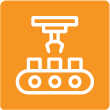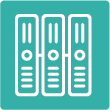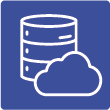
Supervisory control and data acquisition (SCADA) is a control system architecture that includes various software and hardware elements such as computers, data communications, peripheral devices, and controllers that interface with machinery.
The purpose of SCADA is to allow companies to control industrial and manufacturing processes locally or at remote locations. This effectively allows systems to be controlled and monitored from any location, and they can be stopped or started regardless of where you are. Real-time data is also generated by the different elements of the control system. This data can then be stored, gathered, and then compiled into actionable reports.
The flexibility of SCADA allows for individual components such as sensors, valves, motors, and other interfaces to be interacted with directly. These elements can be controlled remotely with software, and they can be programmed to activate or change dynamically based on a set of conditions that are managed by users. Everything is also recorded to a log, meaning that every action taken can be monitored and examined to ensure that systems are functioning correctly and configured properly.
What Does a SCADA System Look Like?
Most SCADA architecture consists of programmable logic computers (PLCs) or remote terminal units (RTUs). These are systems that can communicate with different objects within a factory or manufacturing plant. The information is then sent to computers with SCADA software which can then process and display the information. This can help operators understand the current state of the various manufacturing processes taking place and make important decisions should they need to.
Automated alerts and notifications can be set up to help operators identify potential issues. For example, a SCADA system can be configured to alert an operator if multiple sensors are failing or systems are acting outside a defined margin of error. The operator can remotely pause the processes involved and then use the SCADA system data to determine the cause of the issue. Once the operator has reviewed the data and discovered the issue, they can manually resolve the fault or reboot the system to fix any potential errors. By looking at the log file for that particular faulty component, the operator can get a better understanding of what caused the problem and how it can be fixed in the future.
By establishing systems like this, manufacturing and industrial plants can drastically improve performance, reduce the loss of product, and make it easier for operators to manage their plants with fewer employees.
Where Does OAS Fit In?
The Components of a SCADA System
To gain a better understanding of SCADA, it helps to understand the individual components that make up a system.
Inputs and Sensors

Inputs and sensors are the first component of a SCADA system and are integral to the overall functionality. These inputs and sensors are essentially used to pick up data that is sent to various other components of the SCADA system.
Sensors can generally be anything that needs to be monitored. For instance, sensors can be used to detect pressure within a pipe, they can be used to monitor temperatures, or they can even measure the direction of the wind.
Inputs involve anything that humans will touch or interact with. It can mean basic two-state on/off switches, a joystick that controls a robotic arm, or even adjust something more precisely such as the temperature of another device.
PLCs and RTUs

PLCs and RTUs are used to collect data from inputs and sensors. They can then convert the data into information that is used by the SCADA system. It’s often translated into something much easier for operators to understand.
For example, a computer will only understand a switch as having two states; 0 and 1. PLCs and RTUs can be programmed to understand 0 as “Off” and 1 as “On”. This can then be used to display the state of a machine as on or off to the operator instead of 0 and 1, making it a bit easier to read. This is just a very simple example of how PLCs and RTUs translate data into something much easier to understand.
As another example, a rotating device could have hundreds of states depending on how much it has turned and its current position could be expressed as a number based on a relative angle. If that number increases, then it could indicate that the device is being rotated clockwise and the PLC can be programmed to display this to the operator as “Right” or “Clockwise”, and vice versa as “Left” or “Anti-Clockwise” if the value is decreasing. This could help operators understand if an exhaust fan is currently pushing or pulling air which would be useful for a ventilation system.
PLCs can also send commands to inputs. This can be automated, such as opening a relief valve if there is too much pressure in a system, or it can be sent manually by the user.
Alarms and Notifications

PLCs and RTUs can be programmed to automatically send notifications or raise alarms. For example, if the pressure built up in a tank or pipe is too much, then a notification will be sent to operators and the PLC will automatically send a command to a defined relief valve to automatically release pressure. However, if the relief valve cannot be opened and a disaster is imminent, then the system will raise alarms and start processes to help contain the potential damage and prevent accidents from occurring.
Notifications can also be used to get an overall idea of how a system is performing. Operators can set up SCADA notifications to give them a general idea of how the plant is performing at certain times of the day. This will help the operator check if the plant is performing well and will give them an idea of what areas to inspect if needed, or if they can focus on other tasks.
Human-Machine Interface (HMI)

An HMI tends to be a display that can be interacted with using various inputs like a keyboard, house, or custom buttons. The information is often displayed as numbers, but it can also be programmed to interpret data graphically as well. It can also be connected to cameras that will display the device or component that the system is monitoring.
For instance, an HMI could display a picture of a tank in a facility that is storing some kind of liquid. The HMI could display graphs showing the current volume within the tank and also contain controls that could be used to empty the tank or prevent it from losing volume. In short, an HMI is typically used to analyze the information but it can also be used to make data-driven decisions to optimize the production process and prevent further loss of a product should an error occur.
Historian

The final component of a complete SCADA system would be the data historian. A historian is responsible for storing and logging all of the data that the SCADA system collects. It also records logs for certain actions that take place within the system, such as activating certain machines or sending commands to inputs from an HMI.
The purpose of the historian is to log everything that happens with the system and also create historical data for certain processes, plants, and systems. Historian systems typically sync with an online system so that operators and even shareholders can access the data from anywhere. However, a historian can also be operated locally by running it from a server PC at the plant. This PC is connected to the SCADA network and records everything that happens within the plant.
The data can be used to create actionable reports by the operator, but it can also be used to create historical data that is given to shareholders to see the process of the plant and its overall effectiveness. Historical data can also be used to identify the cause of an accident that led to a loss of product or an employee injury.
Who Uses SCADA?
SCADA is mainly used by industrial organizations and manufacturing plants that use complicated and intricate machinery to produce a large number of products or perform multiple processing tasks at once. The purpose is to help maintain large and efficient systems by recording data from multiple sensors and devices that can be used to mitigate downtime.
SCADA systems work mainly in these scenarios, but their application can be modified to be used in a number of different industries. At its core, SCADA is just a system to monitor multiple PLCs and RTUs that are being fed with data from sensors and manual inputs. In that sense, SCADA can be applied to a variety of different industries and use cases as long as there is a need to collect, compile, and analyze large sets of data at once.
As of now, SCADA systems are critical in industries such as:
- Energy
- Food
- Beverage
- Manufacturing
- Power
- Recycling
- Oil and gas
- Transportation
- Building management
- Water and wastewater
These are major industries that make full use of SCADA by deploying hundreds or potentially thousands of sensors and manual input devices that provide data to PLCs and RTUs.
However, SCADA systems may also be present on a much lower scale as well.
For example, local supermarkets may use a small-scale SCADA system to manage refrigeration units. Sensors can be installed within refrigerators and freezers to monitor the temperature of the devices. This information can then be passed to a PLC or RTU which can control the power state of the unit. If the sensor reads a temperature that is well above a user-defined limit, it means that the refrigeration unit is no longer working or is faulty. This can trigger a notification to an operator who will then manually inspect the unit or send an engineer to examine it. Meanwhile, the system will automatically turn the refrigeration unit off and floor staff can manually remove the items and place them into another unit to keep the items inside properly refrigerated to prevent the loss of product.
SCADA systems can even be used inside your home to monitor and change temperatures. Sensors can be installed around the house or in different rooms to monitor the temperature. This data can feed into a system that has been pre-programmed to maintain a specific temperature. This can be connected to a heating and cooling system that automatically turns on when the temperature deviates from a user-programmed setting. This is a small-scale SCADA system that can be used to regulate the temperature inside a home and ensure it’s comfortable for everyone inside.
As you can see, SCADA systems have multiple applications on both a large industrial scale and a smaller home scale. However, its primary purpose is for use in large industrial and manufacturing operations.
SCADA Compatibility and Standards
A control system architecture is only as useful as the compatibility it offers. While the concept of SCADA is simple to understand, the components used to create one need to work in harmony.
Open Automation Software’s Universal Data Connector is a great example of a SCADA component that is essential for gaining unparalleled access to industrial operations and enterprise data. The OAS Platform supports data transport from any data source to any destination. It supports a wide variety of PLCs from reputable brands such as Allen Bradley and Siemens, and it can move data between popular cloud-based IoT services such as AWS, Azure, and MQTT brokers and clients.
For a SCADA system to be effective, flexible, and customizable, it needs to support multiple platforms, connectors, and tools. The core of any world-class SCADA system is in the connectivity between the different PLCs, RTUs, and databases. With effective automation solutions, you’ll find it much easier to manage your operations and optimize them as much as possible.
Contact Open Automation Software Today
The OAS Universal Data Connector gives operators complete access to industrial operations and data. Download the OAS Platform today or schedule a live interactive demo. Don’t hesitate to get in touch to learn more about the OAS Platform and how it can transform your SCADA system.
